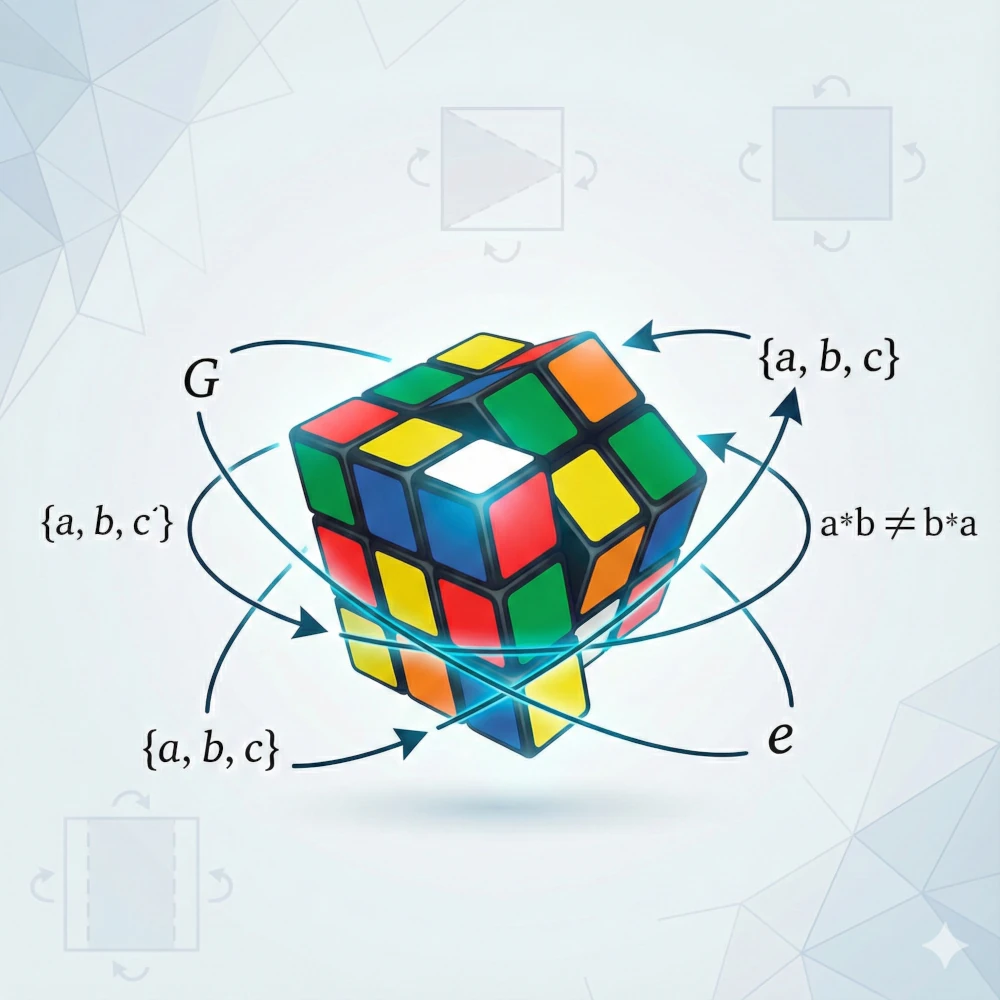Think of a square plain sheet of paper, of any color, kept on a table.

Now, close your eyes. If I pick that sheet of paper, rotate it ninety degrees clockwise, and keep it back down, you wouldn’t know I touched it. It looks exactly the same. I could rotate it one hundred and eighty degrees. I could flip it over and keep it back there. I could leave it alone entirely. Yet, upon opening your eyes you won’t be able to say as to whether I touched it or not!!
Group theory is the study of these ghosts.
It isn’t concerned with the numbers—you won’t find much solving for x here—but rather the rigid structure of “actions” you can perform on an object without breaking it. It is the mathematics of symmetry, but “symmetry” here means something aggressive. It’s a verb. It is a measure of how much abuse a system can take and still look like it hasn’t changed.
To be a “Group,” a collection of these actions has to follow four rules. Mathematicians call them axioms; I call them common sense formalized into rigid law.
Closure Property
First, the system has to be a closed loop. If you turn the square right, and then flip it, the end result must be a move that is already on your list of allowed moves. You can’t turn the square and suddenly find yourself holding a triangle. That’s Closure. You stay inside the sandbox.
Existence of an Identity Element
Second, there must be a way to do nothing. This sounds lazy, but it’s mathematically vital. You need a “zero” move. In the land of multiplication, it’s the number 1. In the land of squares, it’s leaving the thing alone. This is the Identity.
Existence of Inverse Elements
Third, and this is where the philosophy bleeds in, you have to be able to undo your mistakes. If you turn the square clockwise, there must be a counter-move (turning it counter-clockwise) that drags you back to the start. Every action must have an Inverse. No dead ends. No one-way streets. If you can go there, you must be able to get back.
Associativity must hold in the group
Finally, the boring one: Associativity. It just means that if you smash three actions together, it doesn’t matter how you group the brackets, as long as you keep the sequence in order. (a⋅b)⋅c has to equal a⋅(b⋅c).
That last part about order is where the real monsters live.
In grade school arithmetic, 5+3 is the same as 3+5. You’ve been trained to believe that order is irrelevant. Group theory shatters that. It introduces you to Non-Abelian groups, where a⋅b is strictly not the same as b⋅a. If you go back to your school arithmetic, it is like 5-3 is not the same as 3-5!
Think about putting on your socks and shoes. That is a group operation.
Action A: Put on socks.
Action B: Put on shoes.
If you do A then B, you are ready for work. If you do B then A, you are wearing socks over your shoes and people will cross the street to avoid you. The actions are the same, the components are the same, but the order changes the reality.

This is why the Rubik’s cube is so hard. It’s a visible, plastic Non-Abelian group. You twist the top face, then the right face. That creates a specific mess. If you had twisted the right face and then the top face, you’d have a completely different mess. You are wandering through a maze of 43 quintillion permutations, navigating by the structure of the group.
Physicists stare at this stuff because it turns out the universe is built on it. The standard model of particle physics isn’t made of “stuff”; it’s made of symmetries. Groups like SU(3)×SU(2)×U(1) describe how fundamental particles dance with each other. They are just specific sets of rules for shuffling quantum information.
So, forget the equations for a second. Group theory is simply the rigorous proof that if you twist something enough times, eventually, you’ll end up right back where you started. Unless, of course, the universe is infinite, in which case you just keep twisting.
